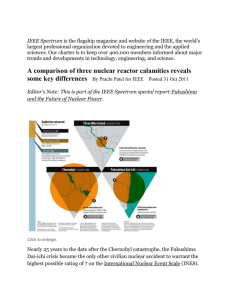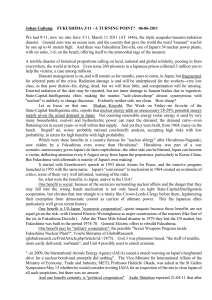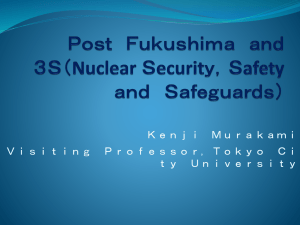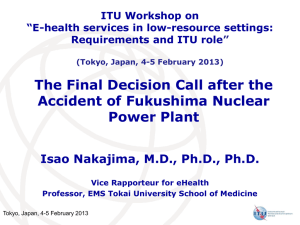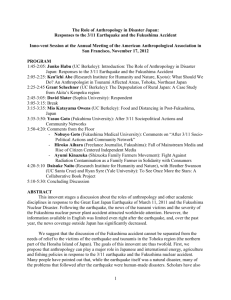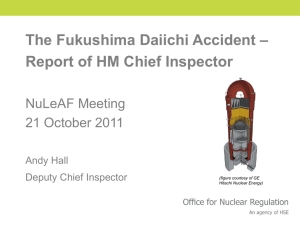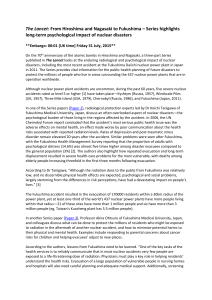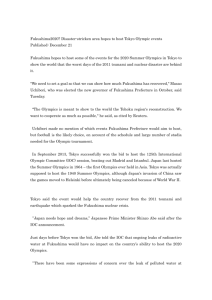UNSCEAR: Radiation in Fukushima
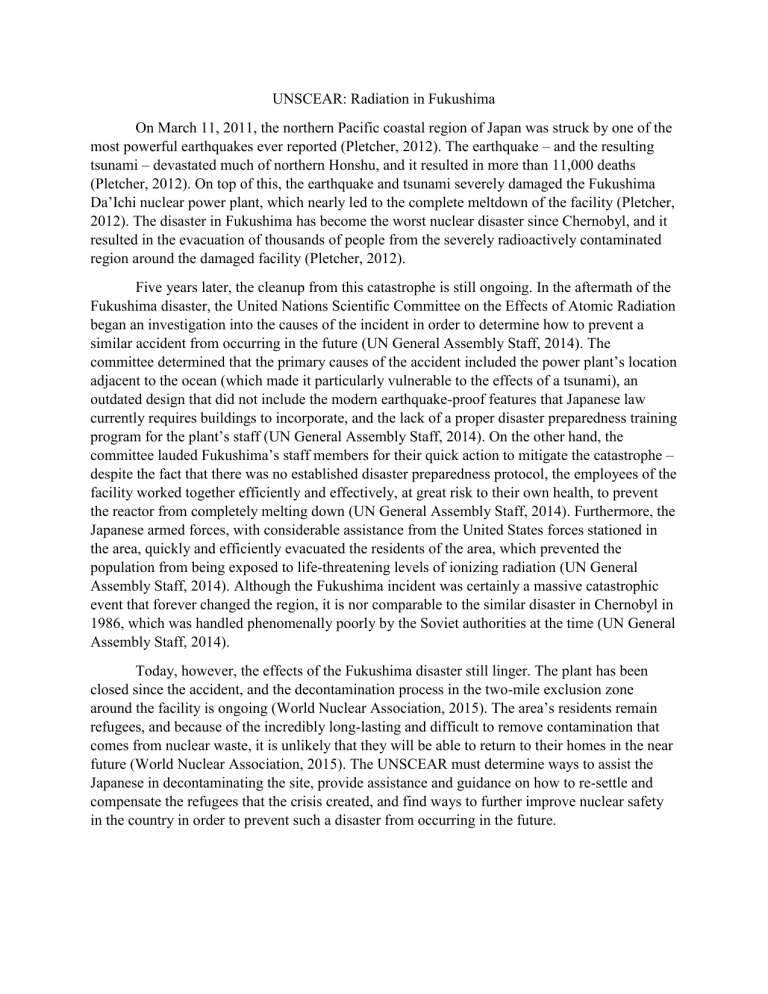
UNSCEAR: Radiation in Fukushima
On March 11, 2011, the northern Pacific coastal region of Japan was struck by one of the most powerful earthquakes ever reported (Pletcher, 2012). The earthquake – and the resulting tsunami – devastated much of northern Honshu, and it resulted in more than 11,000 deaths
(Pletcher, 2012). On top of this, the earthquake and tsunami severely damaged the Fukushima
Da’Ichi nuclear power plant, which nearly led to the complete meltdown of the facility (Pletcher,
2012). The disaster in Fukushima has become the worst nuclear disaster since Chernobyl, and it resulted in the evacuation of thousands of people from the severely radioactively contaminated region around the damaged facility (Pletcher, 2012).
Five years later, the cleanup from this catastrophe is still ongoing. In the aftermath of the
Fukushima disaster, the United Nations Scientific Committee on the Effects of Atomic Radiation began an investigation into the causes of the incident in order to determine how to prevent a similar accident from occurring in the future (UN General Assembly Staff, 2014). The committee determined that the primary causes of the accident included the power plant’s location adjacent to the ocean (which made it particularly vulnerable to the effects of a tsunami), an outdated design that did not include the modern earthquake-proof features that Japanese law currently requires buildings to incorporate, and the lack of a proper disaster preparedness training program for the plant’s staff (UN General Assembly Staff, 2014). On the other hand, the committee lauded Fukushima’s staff members for their quick action to mitigate the catastrophe – despite the fact that there was no established disaster preparedness protocol, the employees of the facility worked together efficiently and effectively, at great risk to their own health, to prevent the reactor from completely melting down (UN General Assembly Staff, 2014). Furthermore, the
Japanese armed forces, with considerable assistance from the United States forces stationed in the area, quickly and efficiently evacuated the residents of the area, which prevented the population from being exposed to life-threatening levels of ionizing radiation (UN General
Assembly Staff, 2014). Although the Fukushima incident was certainly a massive catastrophic event that forever changed the region, it is nor comparable to the similar disaster in Chernobyl in
1986, which was handled phenomenally poorly by the Soviet authorities at the time (UN General
Assembly Staff, 2014).
Today, however, the effects of the Fukushima disaster still linger. The plant has been closed since the accident, and the decontamination process in the two-mile exclusion zone around the facility is ongoing (World Nuclear Association, 2015). The area’s residents remain refugees, and because of the incredibly long-lasting and difficult to remove contamination that comes from nuclear waste, it is unlikely that they will be able to return to their homes in the near future (World Nuclear Association, 2015). The UNSCEAR must determine ways to assist the
Japanese in decontaminating the site, provide assistance and guidance on how to re-settle and compensate the refugees that the crisis created, and find ways to further improve nuclear safety in the country in order to prevent such a disaster from occurring in the future.
Works Cited
Pletcher, K. (2012). Japan earthquake and tsunami of 2011 . Retrieved from Encyclopedia
Britannica Web site: http://www.britannica.com/event/Japan-earthquake-and-tsunami-of-
2011
UN General Assembly Staff. (2014, December 5). Resolution Adopted by the General Assembly on 5 December, 2014 . Retrieved from UNSCEAR Web site: http://www.unscear.org/docs/A-RES-69-84_e_N1467441.pdf
World Nuclear Association. (2015, August). Fukushima Accident . Retrieved from World Nuclear
Association Web site: http://www.world-nuclear.org/info/Safety-and-Security/Safety-of-
Plants/Fukushima-Accident/


